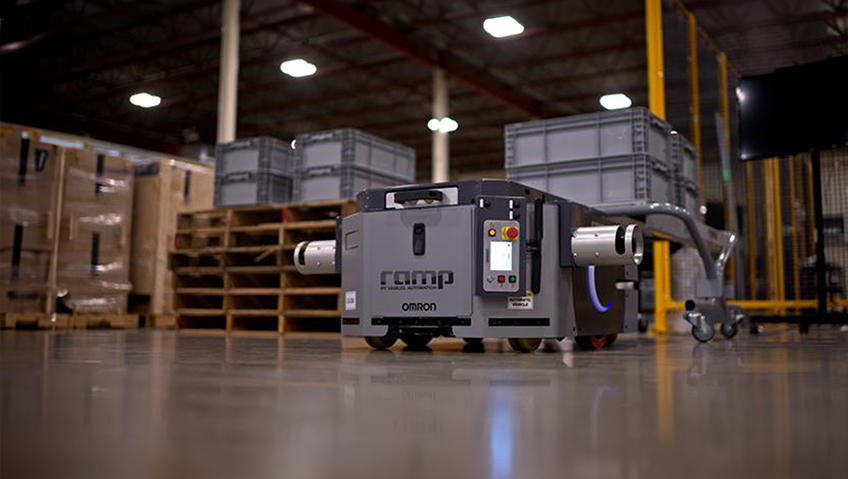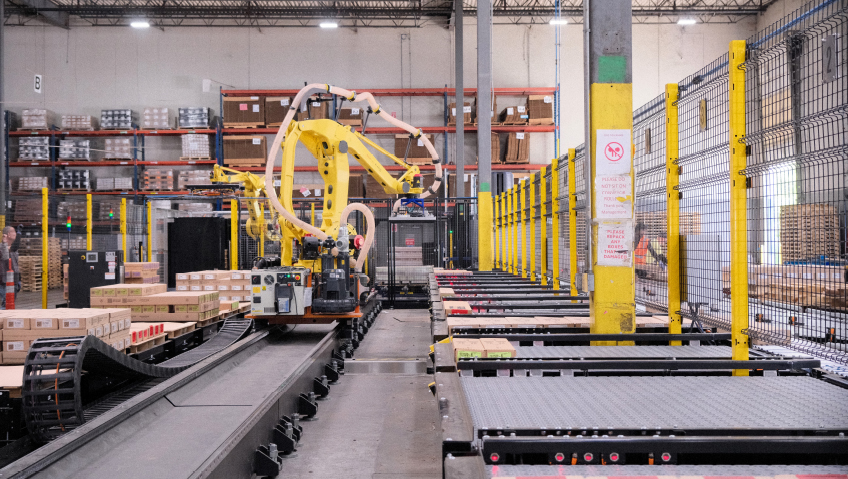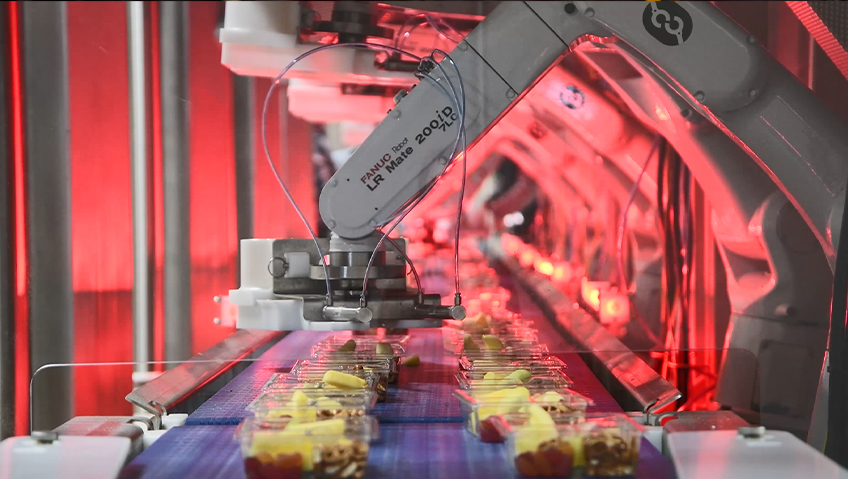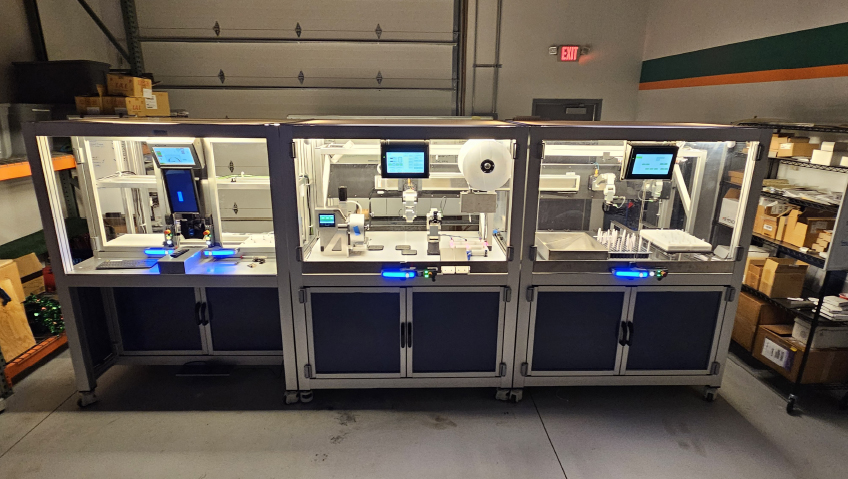Autonics delivers automation solutions that simplify industrial processes. Used by leading manufacturers across a variety of sectors, the company’s technology increases safety, convenience, productivity, and efficiency around the world.
The business is headquartered in South Korea and has a presence in over 100 countries, with local subsidiaries in China, Japan, Vietnam, Indonesia, Malaysia, India, Türkiye, Russia, Mexico, Brazil, and the United States.
Taking semiconductors to the next level
The company is enjoying strong growth within the semiconductor space. “Historically, Autonics is a Korean-based manufacturer, so our initial semiconductor growth was primarily focused within the Asian space,” says Regional Sales Manager Ray Freudenberg. “Since coming to the U.S., expansion has steadily been taking place. Proving your worth in the semiconductor industry takes time, so the focus of Autonics USA has been on getting our name out there as a quality supplier. We’ve relied on our core products to get noticed, and have furnished samples for testing and provided technical support to ensure project success,” he says.
“What we have discovered about our own product along the way is that we are more capable and flexible than we were aware of. This seems to be driving semiconductor wins as we go forward with our partners.”
How has the company managed to find success in this competitive space? “Partnership is the key, really,” Freudenberg says. “There are many products in the market, but the passion and drive to accomplish alongside and on behalf of our customer base is what has fueled our successes so far.”
The company’s offerings within the semiconductor space stand out for several reasons. “Autonics offers workhorse products that are easy to use, economical to purchase, and functionally robust,” Freudenberg says. “Our focus is on doing what we do well, often exceeding expectations, without complicating the process along the way. Simply put, we just work better.”
Navigating the semiconductor industry involves some unique challenges, which Autonics has addressed and overcome. “The semiconductor industry is a somewhat closed ecosystem,” says Freudenberg. “A lot of investment has been made on the status quo, which works well enough to produce a quantity of product. That’s a lot of headwind to power through. Autonics realizes that the industry as a whole requires time to process change, which we are willing to work through with our customers. Being flexible helps a lot, both in terms of product design and support. We work with our customers, not just for them, and we’re in this for the long term.”
The company’s MD5 product, a 5-phase stepper driver, is particularly popular. “It’s very robust and long lasting,” Freudenberg says. “It’s also been proven to be a capable product, displacing products that should have more power than we do but can’t actually work as well in the application space.”
The company’s Power Controllers for sensitive temperature applications are also popular. “Our DPU, SPR, and SPRM have the features needed to ramp quickly and hold temperatures with minimal operator intervention. Having three series of products that can modulate power with greater stability than a solid-state relay means that we can tailor a solution for the end customer.”
The TN Series Temperature Controller also deserves consideration. “Programmable, with two degrees of freedom and ramp/soak capability, this is the perfect complement for our power controller lineup. It’s a combination that gives fast response with stable control,” Freudenberg explains.
“Our newest products, the BWM and BWML, which are primarily designed to see the edges of glass in a cassette and map their locations, in addition to providing proper loading ‘flatness’ data, are our next venture in the semiconductor market,” Freudenberg says. “Having multiple channel outputs and network communications allow for individual components to be located without damage or breakage,” he explains.
“Finally, let’s not overlook our Sensor products. Having photomicro sensors, fiberoptic amplifiers and fibers, plus a full complement of photoelectrics allows us to complete the offer. Autonics has standardly accepted form factors for worldwide use which also include proximity sensors. We’re a complete package under one roof.”
Functional safety products
The company recently launched a new Functional Safety line, which helps organizations provide a safe working environment. “Autonics recognized how well some of our other products aligned with the implementation of Functional Safety,” says Regional Sales Manager David Upton. “It was a natural expansion of our product portfolio to add this segment of automation devices. Part of our company culture is to ‘Make Life Easy.’ We see Functional Safeguarding as a key component to this belief and take great pride in supporting our customers to provide a safe work environment for their workers to return home from each day without injury.”
The product line stands out in the market for a number of reasons. “Autonics has worked very hard to make our products as user-friendly and easy to implement as we can while still maintaining levels of Functional Safety equal to or exceeding market competitors,” says Upton. “Our management is very supportive of our products’ competitive pricing and availability. We maintain stock levels of the most common Functional Safety products at our USA office and warehouse in Mundelein, Illinois (North Chicago). Autonics manufactures our products ourselves, so we control quality, cost, and production rate.”
Specific products in this line include the Mechanical Safety Door Switch and Emergency Stop, Mechanical Locking Safety Door Switch, Non-Contact, Magnetic Switch, Safety Light Curtains, Safety Controllers, Safety Selector Switch, and Safety 3 position Enabling Grip Switch.
These products “are ever evolving and one of the only product lines whose use is governed by a government agency, OSHA,” Upton explains. “This oversight is expected to protect workers from interacting with hazardous equipment or tools as much as possible without rendering a machine inoperable or unusable.”
One product to highlight is the SFL and SFLA Safety Light Curtain. “This is one of our thrust products in Functional Safety and has been very well received in the market,” Upton says. “Some very large names in the machine tooling segment have adopted our Safety Light Curtains as their standard.”
Customers can choose which version best fits their needs. “We have worked to keep our Safety Light Curtain product as uncomplicated as possible by having two versions to select from,” he says. “Our SFL is our entry level Safety Light Curtain yet remains feature-rich, on par with some competitors’ mid-range products. The SFLA is our more advanced Safety Light Curtain, with even greater features and capabilities.”
Autonics’ atLightCurtain is the company’s dedicated software for SFL/SFLA series Safety Light Curtains that monitors operations and sets functions. “The software is free even though it contains some very powerful features,” Upton says. “[It] is designed for ease of use and intuitive operation.”
Smart packaging solutions
The company also provides solutions for packaging machine OEMs and end users around the globe. “Autonics products are used in every aspect of the packaging process,” says Regional Sales Manager Warren Grasheim. “Photo-electric, fiber optic, proximity, and vision sensors, as well as rotary encoders, are used on conveyors to ensure that a product is in position to be processed for packaging correctly. This packaging process may include sorting, sealing, cutting, folding, labeling, and even shipping.” In addition, the company supplies stepper motors and drives, HMIs, I/O systems, counters, and timers, which are utilized in numerous packaging applications. And Autonics offers a broad line of temperature controllers for packaging machines that require precise temperature control.
The team has worked hard to overcome the challenges inherent to the packaging industry. “For end users, other manufacturers may already have components installed on their machines and we are often asked to ‘cross’ to our equivalent (or better) component,” Grasheim explains. “Fortunately, we’ve had very little disturbance in our supply chain and most of our products are available to ship from stock, enabling us to capture market share. With OEM packaging machine manufacturers, every machine designed has a product ‘life cycle’ and once a component is spec’d in, it is often difficult to displace. However, timing is everything and when we are able to demonstrate the features, benefits, cost savings, lead times, quality, and customer service behind every Autonics product, we are having our products spec’d in at these OEM manufacturers and it is our competition who now has the challenge of displacing us!”
With market-leading products for a range of industries, Autonics has solidified its place as a global leader in automated solutions. But the company has not stopped there; this team looks at the big picture, focusing on the customer to ensure a strong future for both the company and the consumer.
“At the end of the day, the best product in the world loses its shine if it doesn’t come with help and support,” says Freudenberg. “Autonics USA has assembled a group of technically sound personnel who bring various experiences and ideas to the table. We’re more than just good product—we’re good people, who are interested in our customers’ success.”






